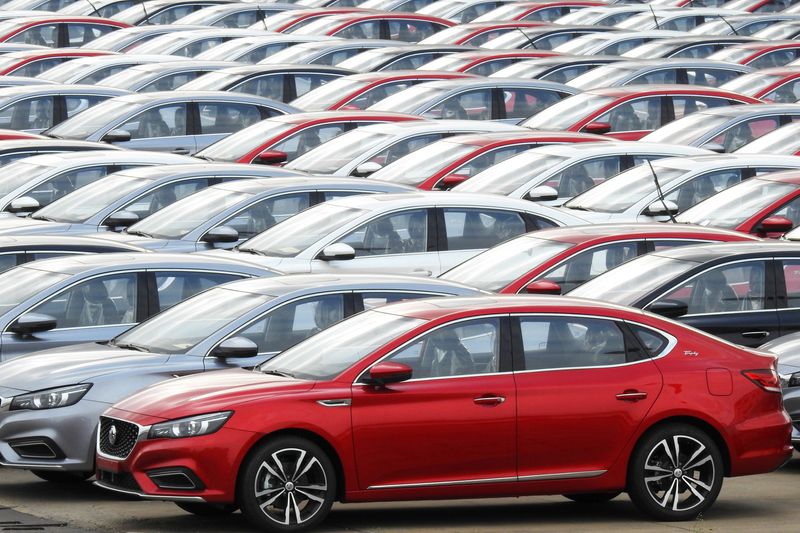
By David Lawder
(Reuters) – The Biden administration on Friday locked in steep tariff hikes on Chinese imports, including a 100% duty on electric vehicles, to strengthen protections for strategic domestic industries from China’s state-driven excess production capacity.
The U.S. Trade Representative’s office told Reuters that many of the tariffs, including a 100% duty on Chinese EVs, 50% on solar cells and 25% on steel, aluminum, EV batteries and key minerals, would go into effect on Sept. 27.
The USTR determination, first reviewed by Reuters, showed a 50% duty on Chinese semiconductors, which now include two new categories – polysilicon used in solar panels and silicon wafers – are due to start in 2025.
Adjustments to the punitive “Section 301” tariffs on $18 billion worth of goods announced in May by President Joe Biden were minimal and disregarded auto industry pleas for lower tariffs on graphite and critical minerals needed for EV battery production because they are still too dependent on Chinese supplies.
USTR left unchanged the tariff increase to 25% from zero on lithium-ion batteries, minerals and components, with the increase for batteries for EVs taking effect Sept. 27 and those for all other devices, including laptops and cell phones, on Jan. 1, 2026.
‘TOUGH, TARGETED’
Lael Brainard, the top White House economic adviser, told Reuters that the decision was made to ensure that the U.S. EV industry diversifies away from China’s dominant supply chain.
She said such “tough, targeted” tariffs are needed to counteract China’s state-driven subsidies and technology transfer policies that have led to over-investment and excess production capacity. But Washington is investing hundreds of billions of dollars worth of its own tax subsidies to develop domestic EV, solar and semiconductor sectors.
“The 100% tariff on electric vehicles here does reflect the very significant unfair cost advantage that Chinese electric vehicles in particular are using to dominate car markets at a breathtaking pace in other parts of the world,” Brainard said. “That’s not going to take place here under the vice president’s and the president’s leadership.”
China has vowed retaliation against the “bullying” tariff hikes and argued that its EV industry’s success is due to innovation, not government support.
The higher U.S. tariffs take effect as Vice President Kamala Harris and former President Donald Trump are both courting voters in auto and steel producing states, trying to position themselves as tough on China ahead of the November presidential election. Trump has vowed to impose 60% tariffs on all Chinese imports.
The European Union and Canada also have announced new import tariffs on Chinese EVs, the latter matching the 100% U.S. duties.
PORT, MEDICAL RELIEF
The final tariff decision does provide some temporary relief for U.S. port operators who were facing a new 25% tariff on massive ship-to-shore cranes, an industry that China dominates with no U.S. producers.
The duty would add millions of dollars to the cost of each crane. USTR said it will allow exclusions from the tariffs for any Chinese port cranes that were ordered prior to the May 14 initial tariff announcements, as long as they are delivered by May 14, 2026.
USTR raised tariffs to 50% on medical face masks and surgical gloves, from an initially proposed 25%, but delayed their start to allow a shift to non-Chinese suppliers. The planned duty on Chinese syringes, which were in short supply during the COVID-19 pandemic, will immediately rise to 100% from a previously planned 50%, but USTR will allow a temporary exclusion for enteral syringes, used to feed infants, for a year.

The agency also said it will consider requests for tariff exclusions for five Chinese industrial machinery categories, including those for machinery for purifying or filtering liquids, industrial robots and printing machinery.
It will allow tariff exclusions for Chinese solar wafer and cell manufacturing equipment, but not for equipment used to make full solar modules.
This post is originally published on INVESTING.



